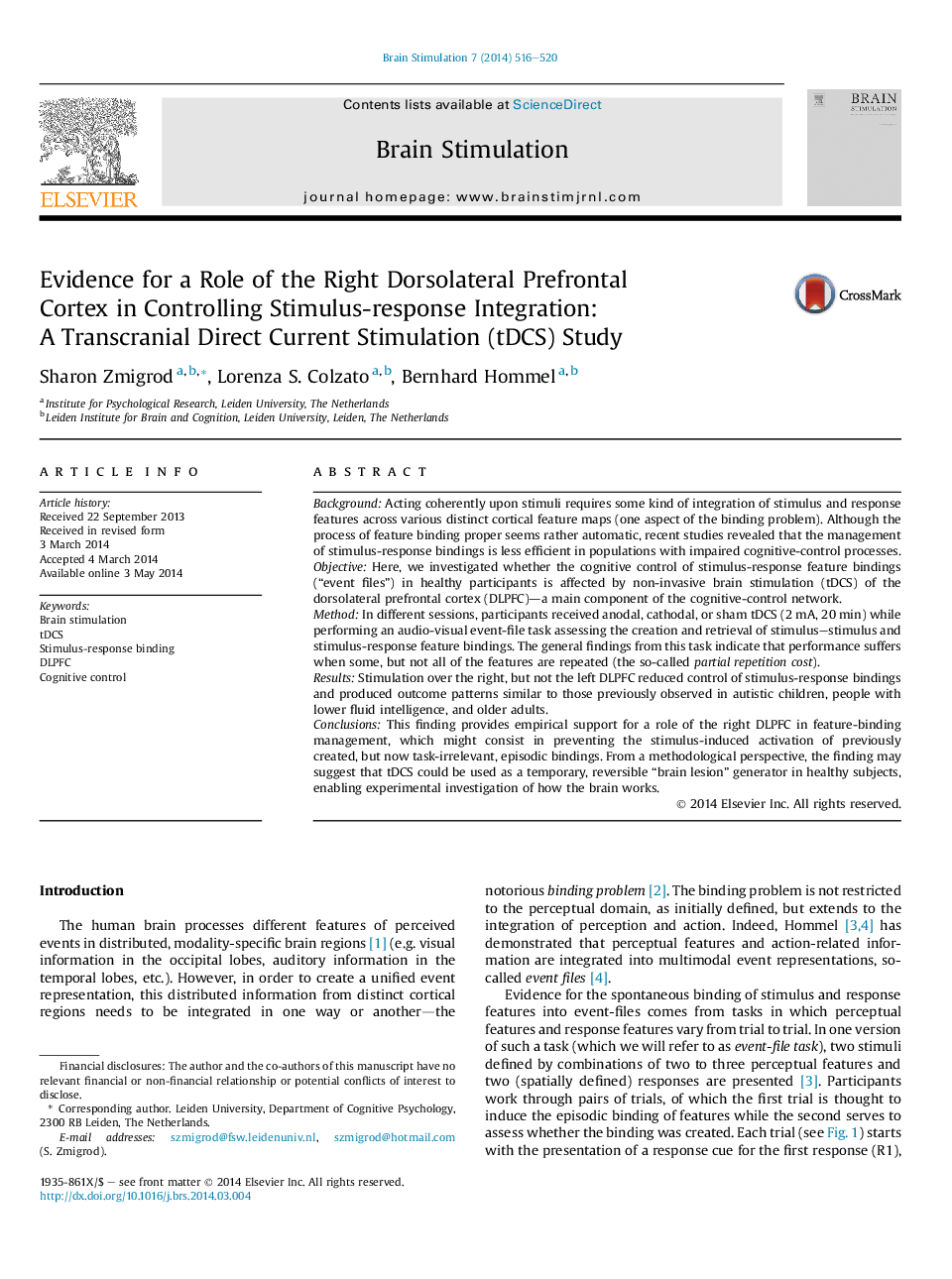| Article ID | Journal | Published Year | Pages | File Type |
|---|---|---|---|---|
| 6005545 | Brain Stimulation | 2014 | 5 Pages |
BackgroundActing coherently upon stimuli requires some kind of integration of stimulus and response features across various distinct cortical feature maps (one aspect of the binding problem). Although the process of feature binding proper seems rather automatic, recent studies revealed that the management of stimulus-response bindings is less efficient in populations with impaired cognitive-control processes.ObjectiveHere, we investigated whether the cognitive control of stimulus-response feature bindings (“event files”) in healthy participants is affected by non-invasive brain stimulation (tDCS) of the dorsolateral prefrontal cortex (DLPFC)-a main component of the cognitive-control network.MethodIn different sessions, participants received anodal, cathodal, or sham tDCS (2Â mA, 20Â min) while performing an audio-visual event-file task assessing the creation and retrieval of stimulus-stimulus and stimulus-response feature bindings. The general findings from this task indicate that performance suffers when some, but not all of the features are repeated (the so-called partial repetition cost).ResultsStimulation over the right, but not the left DLPFC reduced control of stimulus-response bindings and produced outcome patterns similar to those previously observed in autistic children, people with lower fluid intelligence, and older adults.ConclusionsThis finding provides empirical support for a role of the right DLPFC in feature-binding management, which might consist in preventing the stimulus-induced activation of previously created, but now task-irrelevant, episodic bindings. From a methodological perspective, the finding may suggest that tDCS could be used as a temporary, reversible “brain lesion” generator in healthy subjects, enabling experimental investigation of how the brain works.
